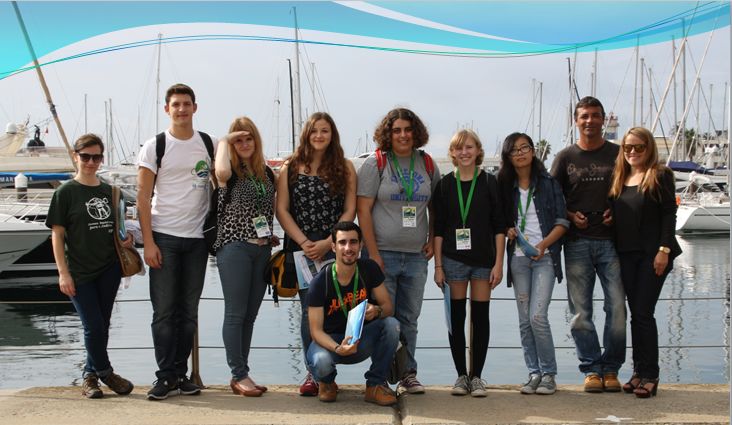 The students of YRE (Young Reporters for the Environment) visited the Cascais Marina to investigate the environmental conditions and treatment of the Marina. The students met with a representative from Blue Flag, Catarina Gonçalves, who taught them about the Blue Flag program and their requirements to certify. As put on the official website “The Blue Flag program works towards sustainable development of beaches and marinas through strict criteria dealing with Water Quality, Environmental Education and Information, Environmental Management, and Safety and Other Services.” The investigation included why Cascais Marina did not have a Blue Flag and what the Marina is doing in efforts to improve.
The students of YRE (Young Reporters for the Environment) visited the Cascais Marina to investigate the environmental conditions and treatment of the Marina. The students met with a representative from Blue Flag, Catarina Gonçalves, who taught them about the Blue Flag program and their requirements to certify. As put on the official website “The Blue Flag program works towards sustainable development of beaches and marinas through strict criteria dealing with Water Quality, Environmental Education and Information, Environmental Management, and Safety and Other Services.” The investigation included why Cascais Marina did not have a Blue Flag and what the Marina is doing in efforts to improve.
Cascais Marina follows most of the requirements but there are a few criteria that they need to improve on. The main criteria for a Blue Flag eco-label includes; environmental education and information, water quality, environmental management and safety and services. The Cascais Marina mainly needed to improve on water quality and environmental management. The worst problem Cascais faced was that they do not have an adequate drainage system in the boat repairing and washing areas. This means that the polluted water can find its way into the water. The drainage could be fixed but it would be very costly based on the major changes that would have to be put into the infrastructure, because of this it is very unlikely that the Marina will be awarded with a Blue Flag in the near future. Furthermore the Cascais Marina did not have water quality that meets the Blue Flag standards. The water was only visibly clean in some areas and in others there was litter, small patches of oil and the water appeared murky. There was also plastic litter stuck in the rocks which had been washed up by the water. This litter has to be removed manually was is not easy to clean up. Lastly the Marina did not have enough recycling bins. There were nine bins on site but seven of them were all concentrated within the same area (the repair and washing area). The Blue Flag representative, Catarina Goncalves, pointed out that there were not any recycling bins near the front.
Despite this, Cascais Marina meets most of the other requirements. They have an environmental policy and plan which tries to minimize the use of harmful chemicals and to prevent accidents as much as possible. Also, the Marina had a safe storage procedure for hazardous waste including oil. The containers are located in a designated area that is surrounded by yellow and black stripes to indicate danger. They sit on sand which is a safety precaution in case anything was to spill. The Marina had a pumping facility for bilge water and other contaminated waters from the boat. The washrooms on site were very hygienic and well equipped. There were separate washrooms for visitors and also for people working at the Marina who come in contact with hazardous materials. The employee washroom contained showers and a large drain to stop the water from coming into contact with other people or the water.
The Marina also had many safety measures in place including an emergency oil spill kit, other devices for gathering oil and a method of blocking off the Marina from other boats to contain the spill. The emergency spill kit includes a large plastic bag that can be used to collect the oil from the surface of the water. Although this is helpful there would still be a large portion of the oil falling to the bottom of the water where it would almost impossible to recover. An employee of the Marina also showed the students synthetic dirt that absorbs toxins. He also showed two types of fabrics that can be put in the water to absorb oil because they do not absorb water. Finally he showed the students a large movable barricade that is pulled across with an iron cord with a dingy.
In conclusion the Cascais Marina is not likely to become a Blue Flag marina but it has many positive features and considerations made for the environment. Although this Marina is geared towards tourism it also works towards being sustainable and environmentally friendly.



You must be logged in to post a comment.